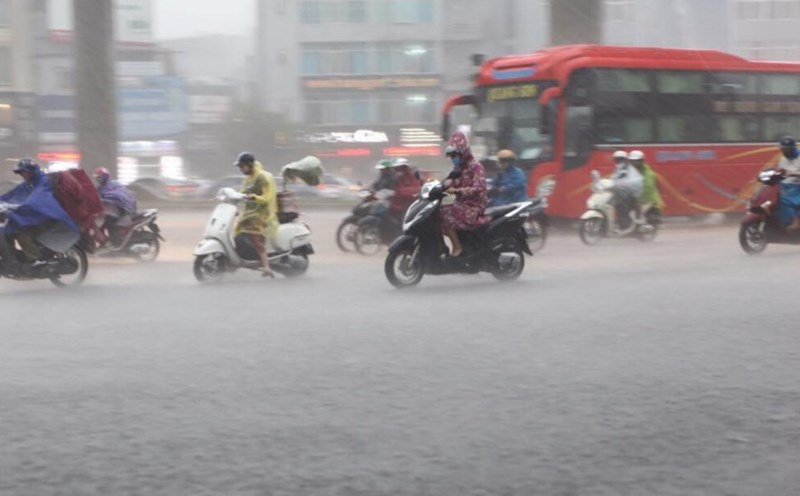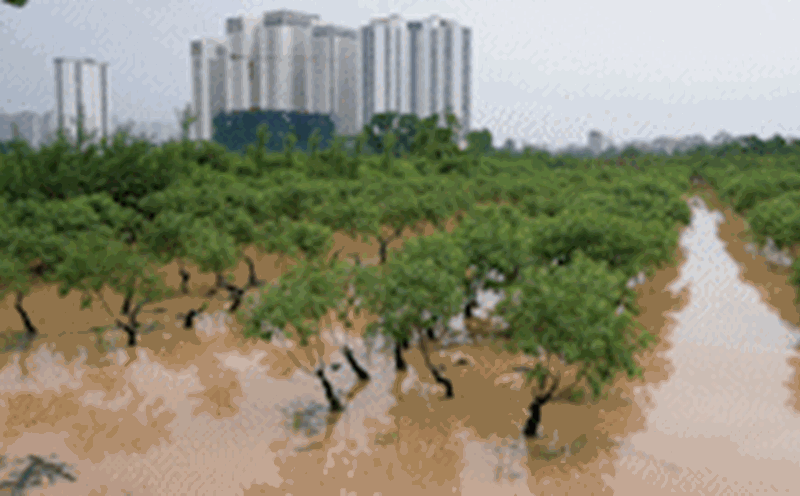According to the latest news released at 11:00 on September 30 from the National Center for Hydro-Meteorological Forecasting, on satellite images, lightning positioning data and weather radar images, convective clouds still exist and continue to thrive in the areas: Thuong Cat, Dong Ngac, Tay Tuu, Phu Dien, Xuan Phuong, Tu Liem, Tay Mo, Ha Dong, Thanh Liet, Kien Hung, Xuan Dinh, Nghia Do, Cau Giay, Yen Hoa, Lang, Giang Vo...
The meteorological agency warned that from now until the next 4 hours, the above areas and neighboring areas of Hanoi's inner city will continue to have showers and thunderstorms. During thunderstorms, there is a possibility of tornadoes, lightning and strong gusts of wind.
Previously, the Northern Hydrometeorological Station said that Hanoi will have heavy to very heavy rain and thunderstorms. Rainfall from 1:00 a.m. on September 29 to 1:00 a.m. on September 30 in some places is generally from 70 - 130mm, some places are larger such as Suoi Hai 226.4mm; Huong Son 172.6mm; Bat Bat 199.8mm; Ba Vi 193mm; Son Tay 160mm, Quang Oai 157mm...
According to the meteorological agency of the North, the cause of the heavy rain in Hanoi was the influence of the low pressure area (weakened from storm No. 10) combined with the convergence of southeast winds developing up to 5,000m.
From early morning to noon today (September 30), Hanoi will have moderate rain, heavy rain, some places with very heavy rain and thunderstorms. Rainfall is generally from 30 - 70mm, in some places over 80mm. From the afternoon of October 30, Hanoi will have rain, showers and thunderstorms. The warning of heavy rain could reach 80mm within 3 hours.
From October 2, Hanoi will have scattered showers and thunderstorms.
The warning level of natural disaster risk due to heavy rain is level 1.
The thunderstorms may be accompanied by tornadoes, lightning and strong gusts of wind that will break trees, damage houses, traffic works and infrastructure.
moderate to heavy rain in a short period of time overloaded the urban drainage system, causing flooding in residential areas, urban areas and low-lying areas, traffic congestion due to flooding and reduced visibility when driving, causing slippery conditions and the risk of traffic accidents.
High-intensity rain in a short period of time can cause landslides in mountainous areas, where the terrain is steep.











